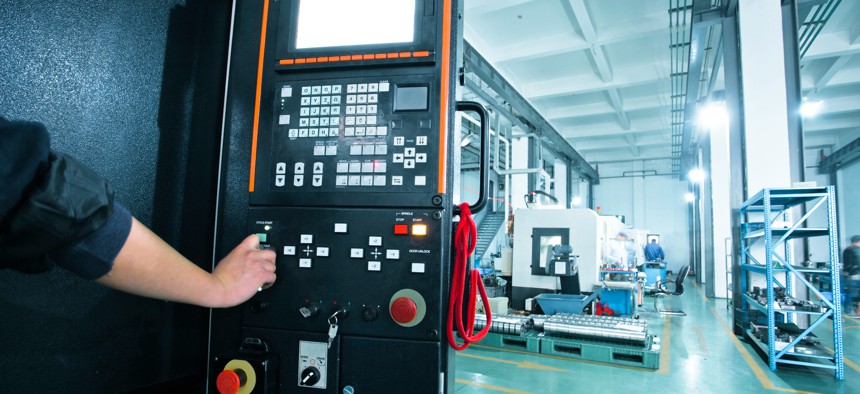Army Materiel Command is Looking to Advanced Manufacturing to Improve Readiness
Army Materiel Command is planning to implement advanced manufacturing techniques from the depots to the battlespace to help produce parts where needed.
Army Materiel Command is planning to implement advanced manufacturing techniques from the depots to the battlespace to help produce parts where needed. But the effort will take careful coordination with the Army's other modernization strides.
"The way I see it is that we'll be doing advanced manufacturing not only in our depots, arsenals and ammunition plants, but also forward in the battlespace based on equipment that we have," Gen. Edward M. Daly Commanding General, Army Materiel Command, told reporters Feb. 1 during a Defense Writers Group event hosted by George Washington University's Project for Media and National Security.
The general noted that those manufacturing systems, such as three-dimensional printers or CNC lathe machining tools, would be "coupled with a digital thread" that allows computer-aided drawings to be pulled alongside the specifications needed to start building.
"That data repository – that data thread, the digital thread – is there now," Daly said, and progress will continue on increasing the number of parts that have [computer assisted design] drawings that can be 3D printed and also on the data repository needed so users can access information from the depot to the tactical edge.
"We're making progress on the number of parts that we have drawings for that we know we can 3D print," Daly said, "we're making progress on the digital thread; it's in place now so that the data repository, no matter where you are, whether you're at the tactical edge or in a depot, you can see all the required files that you need to 3D print a part."
The commanding general also said Army Materiel Command was "making progress on where we position the equipment, from the tactical units all the way to the depots and investing appropriately."
Advanced manufacturing and three-dimensional printing have gained popularity in the federal government in recent years. During the early months of the COVID-19 pandemic, national laboratories looked to 3D printing to alleviate stress and delays in the medical supply chain.
The Defense Department has also experimented with using advanced manufacturing, but a Government Accountability Office report found the systems were vulnerable to hacking due to inconsistent security measures needed "to prevent unauthorized changes and ensure the integrity of the design data."
But for Army Materiel Command, the implementation of 3D printing in the battlespace could take several years along with the coordination and alignment with other strategic modernization efforts, Daly said.
"You have to juxtapose that capability with a myriad of other capabilities," he said, which includes advanced manufacturing, unmanned, ground and aerial resupply systems, water distribution in the battlespace, and reduction of tactical fuel in combat systems – all of which are being worked on.
And while it may take several years, Daly believes the command is on the right path.
"I think we're on a very, very good trajectory. I firmly believe that it's these capabilities, that...in the depots will allow increased velocity and in production and manufacturing and resetting and overhauling of equipment. And at the tactical level, it'll increase readiness," Daly said.






